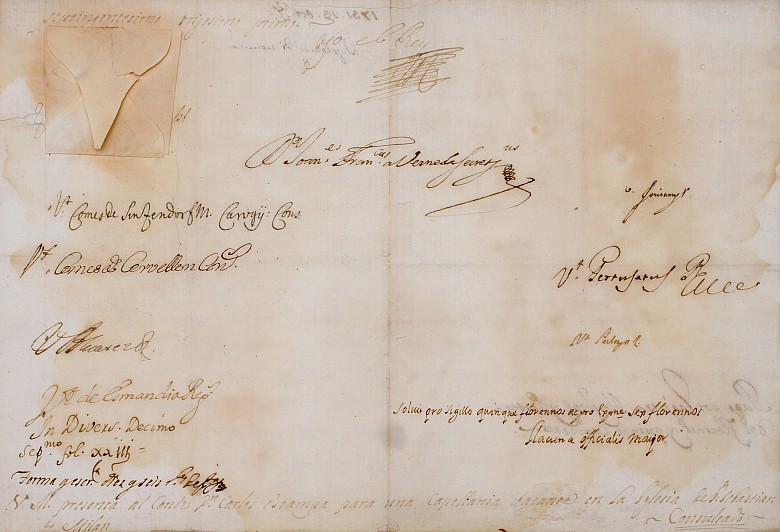Worries about the younger generation: Charles VI
Like his namesake Charles V, Charles VI sought to rule both as king in Spain and also as Holy Roman Emperor. His greatest goal became that of ensuring the succession of his daughter Maria Theresa.
At the outbreak of the War of the Spanish Succession, the waves of which rolled now this way and now that, Charles was only a young archduke. Having been proclaimed king of Spain in 1703, he suffered many setbacks in pressing his claim to the royal throne. The decisive development came in 1711 when his brother Joseph I died, leaving Charles as successor to the Habsburg monarchy. However, the prospect of Spain and Austria being united under his rule led to a reshuffling of the war alliances. Charles left Spain and was elected Holy Roman Emperor in Frankfurt as Charles VI.
Although the succession war concluded with Charles being compelled to sign a treaty renouncing Spain, he could never accept defeat and continued to style himself ‘King of Spain’. Notwithstanding his loss, however, he still came into a number of Spanish territories – Milan, Naples, Sardinia, and the southern Netherlands (present-day Belgium) – which he henceforth concentrated on securing as Habsburg possessions.
At the court of Vienna, Charles VI resolutely promoted a return to the Baroque piety of former days. The church of St Charles Borromeo – the Karlskirche – in Vienna, which he commissioned following the end of a plague epidemic in 1713, is an imposing monument to the high Baroque. In the course of time, Charles broke up his brother Joseph’s team of advisors and reversed his reforms, letting himself in for serious conflict with Prince Eugene of Savoy.
Right through until his death, Charles VI’s political agenda was dominated by his concern to gain acceptance for the Pragmatic Sanction. This document had two particularly important elements. Firstly, Charles declared his territories ‘indivisible and inseparable’, which was the first official declaration of the unity of the Habsburg monarchy. Secondly, the Sanction contained a regulation of all the possible successions – and with respect to the female succession, which was already possible, his own daughters were given precedence over those of Joseph I and Leopold I. As Charles VI had no male heir, the acceptance of this stipulation was a matter of great urgency. On the home front there were few problems. Further afield, however, although complicated negotiations led to many foreign powers accepting the document, Prince Eugene’s objection that a strong army would do more to ensure Maria Theresa’s succession than a piece of paper was to prove a valid one ...

























